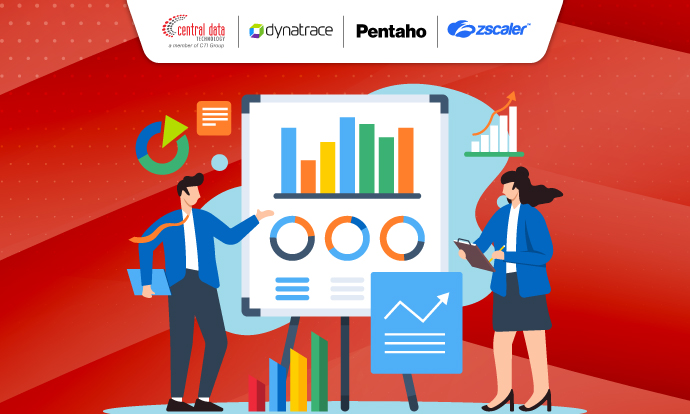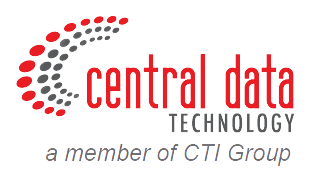
Cited from CNBCIndonesia.com, President Joko Widodo once said, “data is the new oil,” and this phrase is becoming increasingly relevant in today’s digital era. Data has now become a highly valuable asset, just like oil, which fuels the economy. Every day, we generate millions of data points—from business transactions to interactions on social media. However, without proper analysis, this data will only become meaningless numbers. This is where Business Analytics plays its role.
Business Analytics is the process of processing and analyzing data to gain valuable insights. Imagine you have a pile of information, but only by using the right tools and techniques can you find patterns and trends that can help you make better decisions.
So, what exactly is Business Analytics, and why do modern businesses need it so much? This article will answer those questions, providing a comprehensive understanding of Business Analytics.
What is Business Analytics?
Business Analytics (BA) is the process of analyzing data used to gain insights and information that can support better business decision-making. By leveraging statistical methods and data analysis tools, BA helps organizations understand trends, patterns, and relationships within their data. This involves using historical and real-time data to identify opportunities, solve problems, and formulate more effective strategies.
Business Analytics consists of several approaches, including: Descriptive Analytics, Predictive Analytics, and Prescriptive Analytics. Descriptive Analytics focuses on understanding historical data to explain what has happened in the business. This includes financial reports, sales analysis, and other performance measurements. Predictive Analytics, on the other hand, uses statistical techniques and mathematical models to predict future outcomes based on existing data. Meanwhile, Prescriptive Analytics aims to provide recommendations for optimal actions while considering various factors and variables.
How Does Business Analytics Work?
Here’s an explanation of how Business Analytics works in several steps:
1. Data Collection
The first step in the Business Analytics process is data collection. Data can be obtained from various sources, such as internal systems (like database management systems), transaction data, customer surveys, social media, and other external data sources.
2. Data Cleaning and Processing
Once the data is collected, the next step is cleaning and processing the data. This process involves identifying and correcting errors, removing duplicates, and filling in missing data. Clean and structured data will facilitate more accurate analysis.
3. Data Analysis
With the cleaned and processed data, the next step is data analysis. This is the core of Business Analytics, where statistical techniques, machine learning algorithms, and analysis tools are used to extract insights from the data. There are various types of analysis that can be performed, including Descriptive Analytics, Predictive Analytics, and Prescriptive Analytics.
4. Visualization and Communication of Insights
After the analysis is performed, the next step is visualization and communication of insights. Data visualization tools like dashboards, graphs, and reports are used to present the analysis results in an easily understandable way.
5. Decision-Making and Follow-Up
The final step in the Business Analytics process is decision-making and follow-up. Based on the insights gained from the analysis, managers and business leaders can make better decisions and formulate more effective strategies.
Examples and Applications of Business Analytics in Business Decision-Making

One effective example of Business Analytics application can be seen in the retail industry. Companies can use data analysis to optimize inventory management and sales. By leveraging descriptive analysis, they can understand customer purchasing patterns based on location and time. This data allows companies to adjust stock levels in each store according to local demand, reducing storage costs and ensuring products are available when customers need them.
In the banking sector, Business Analytics plays a crucial role in risk management and improving customer service. By analyzing customer transactions and applying machine learning algorithms, banks can detect potential fraud. Additionally, by analyzing customer data, financial institutions can design products and services that better meet the needs of specific market segments.
In healthcare, the application of Business Analytics has become key in decision-making to improve patient care outcomes. Hospitals and healthcare institutions use data analysis to identify trends in patient data, such as infection rates and recovery times. Through diagnostic analysis, they can analyze historical data to determine factors affecting the duration of patient hospitalization.
5 Benefits of Business Analytics for Company Operations
Business Analytics (BA) helps companies with decision-making, strategic planning, and improving operational efficiency. Here are the main benefits of Business Analytics:
1. Better Decision-Making
One of the main benefits of Business Analytics is its ability to enhance decision-making. By deeply analyzing data, managers and business leaders can better understand trends, patterns, and customer behavior.
2. Increased Operational Efficiency
Business Analytics also helps companies improve operational efficiency. By using analysis techniques to identify inefficient processes or waste, companies can optimize their operations and reduce costs.
3. Deeper Customer Understanding
Companies can gain deeper insights into their customers. Customer data analysis allows organizations to better understand customer preferences, behaviors, and needs. This enables companies to develop more targeted marketing strategies and personalize their services or products.
4. Trend and Demand Prediction
Business Analytics enables companies to conduct predictive analysis that helps them forecast market trends and product demand in the future. By understanding behavioral patterns and historical trends, companies can be better prepared to face market changes and proactively adjust their strategies.
5. Competitive Advantage
By using data to understand and respond quickly to market dynamics, companies can adjust their strategies better than competitors who do not use data analysis. This allows them to innovate, identify new opportunities, and maintain customer satisfaction, thereby strengthening their market position.
4 Types of Business Analytics
Business Analytics can be divided into several types, each with different goals and analysis methods. Here’s an explanation of the types of Business Analytics:
1. Descriptive Analytics
Descriptive Analytics focuses on analyzing historical data to provide insights into what has happened in a business. This includes data collection, processing, and analysis to generate reports that explain performance, trends, and patterns that emerge from existing data. Examples of Descriptive Analytics include monthly sales reports, expense analysis, and performance metrics of marketing campaigns.
2. Predictive Analytics
Predictive Analytics aims to predict future outcomes using statistical techniques and mathematical models. This involves analyzing historical data and pattern recognition to make forecasts about potential behaviors and trends. Examples of Predictive Analytics applications include predicting customer behavior, such as the likelihood of future purchases, as well as risk analysis, such as predicting the probability of default on loans.
3. Prescriptive Analytics
Prescriptive Analytics is a type of analysis that provides recommendations for the best actions based on insights gained from Descriptive and Predictive Analytics. This type aims to help companies make optimal decisions while considering various factors and variables. Examples of Prescriptive Analytics applications include supply chain optimization, dynamic pricing, and inventory management.
4. Diagnostic Analytics
Diagnostic Analytics focuses on analyzing data to understand the causes of a specific event or outcome. It is used to answer the question of “why” an event occurred. By using historical data and more in-depth analysis techniques, Diagnostic Analytics can help companies evaluate performance and identify factors influencing business outcomes. Examples of its application include analyzing the causes of product failures or sales declines.
Business Analytics vs Business Intelligence: What Are the Differences?
Business Intelligence (BI) is the process of collecting, storing, and analyzing data to assist in decision-making. BI focuses on descriptive analytics, which provides insights into what has happened in the past through reports, dashboards, and data visualizations.
On the other hand, Business Analytics (BA) encompasses a broader approach that not only involves analyzing historical data but also utilizes predictive and prescriptive techniques. BA integrates statistical analysis methods and algorithms to predict what may happen in the future and provide optimal action recommendations. With a focus on more in-depth analysis, BA helps companies not only evaluate performance but also formulate better strategies based on data-driven predictions and recommendations.
However, in practice, these two approaches complement each other, and many companies use a combination of both to achieve optimal results.
Read More: 12 Data Management Strategies to Build your Modern Data Infrastructure
Challenges in Implementing Business Analytics
Although Business Analytics offers many benefits, its implementation also faces various challenges. One of the main challenges is data collection and integration. Many organizations have data scattered across various sources and formats, such as databases, spreadsheets, and different systems. Collecting and integrating this data into a consistent and reliable platform requires significant effort and resources.
Another common challenge is the lack of analytical skills and understanding within teams. Many companies struggle to find a workforce with adequate analytical skills, including knowledge of statistical techniques, programming, and analysis tools.
To facilitate your implementation, we at Central Data Technology (CDT) provide various innovative tools to assist you. With flagship products like Dynatrace, which monitors application performance in real-time, and Pentaho, which simplifies data processing and visualization, we are designed to streamline your analysis processes. Additionally, with Zscaler Business Analytics, you can easily secure and optimize data usage in the cloud.
Recommended Business Analytics Tools from Central Data Technology (CDT)
Central Data Technology (CDT) understands the importance of strong and effective analysis tools to support business strategies. Therefore, CDT recommends various Business Analytics tools designed to enhance operational efficiency and support better decision-making. In this recommendation, we will discuss three leading Business Analytics tools: Dynatrace, Pentaho from Hitachi Vantara and Zscaler Business Analytics.
Dynatrace
Dynatrace is a cloud-based observation platform designed to provide deep visibility into application performance and IT infrastructure. This tool uses Artificial Intelligence (AI) technology to monitor and analyze data in real-time, enabling organizations to identify issues before they impact end-users.
Features:
- Real-Time Monitoring: Offers real-time monitoring of application performance and transaction tracing in real-time.
- AI-Powered Insights: Uses AI algorithms to identify anomalies and provide actionable recommendations.
- Integration: Supports integration with various tools and platforms, enabling a comprehensive analysis.
Pentaho
Pentaho from Hitachi Vantara Platform is a Business Intelligence and data analytics platform designed to help organizations analyze data and generate insights effectively. Pentaho offers various tools for data integration, visualization, and reporting, making it easy for users to understand and utilize their data.
Features:
- Data Integration: Provides data extraction and transformation capabilities from various sources.
- Interactive Dashboards: Allows users to create interactive dashboards to visualize data effectively.
- Custom Reports: Supports custom report creation, enabling users to tailor their analysis based on their needs.
Zscaler Business Analytics
Zscaler Business Analytics is an integrated analytics tool within the Zscaler security platform, designed to provide deep insights into network security and user behavior. One of its solutions, Zscaler Digital Experience, focuses on detailed data analysis related to network performance and security. With these capabilities, Zscaler helps organizations recognize patterns and trends in network traffic, identify potential threats more quickly, and support more effective strategic decision-making to protect their digital infrastructure.
Features:
- Network Security Analysis: Provides in-depth insights into network traffic and user behavior to detect security threats.
- Real-Time Visibility: Allows organizations to view and analyze network activity in real-time, enhancing threat response.
- Custom Reports and Dashboards: Offers the ability to create tailored reports and dashboards to meet the specific needs of security teams.
- Integration with Other Security Solutions: Can be integrated with other security tools to enhance analysis and response capabilities.
Advantages:
- Cloud-Based Security: Zscaler operates the platform in the cloud, enabling secure access and analysis of data from anywhere.
- Proactive Threat Detection: Allows organizations to detect and respond to threats quickly, reducing risks to company assets.
- Integrated Analysis: Combines security analysis with other business information, providing a broader context for security-related decision-making.
Maximize Data Utilization Through Central Data Technology’s Business Analytics Solutions
Central Data Technology (CDT) serves as your strategic partner in optimizing Business Analytics with the right and effective solutions. With deep experience and a strong understanding of leading Business Analytics tools such as Dynatrace, Pentaho, and Zscaler Business Analytics, CDT is ready to help you integrate and maximize your data utilization.
As part of PT Computrade Technology International (CTI) Group, we are committed to supporting you every step of the way, from the implementation process to maintenance and after-sales support. Don’t wait any longer to gain a competitive edge through optimal data utilization. Contact the CDT team today to start your analytical transformation journey. Click here to connect with us and find the right solutions for your business needs!
Author: Ary Adianto
Content Writer CTI Group

